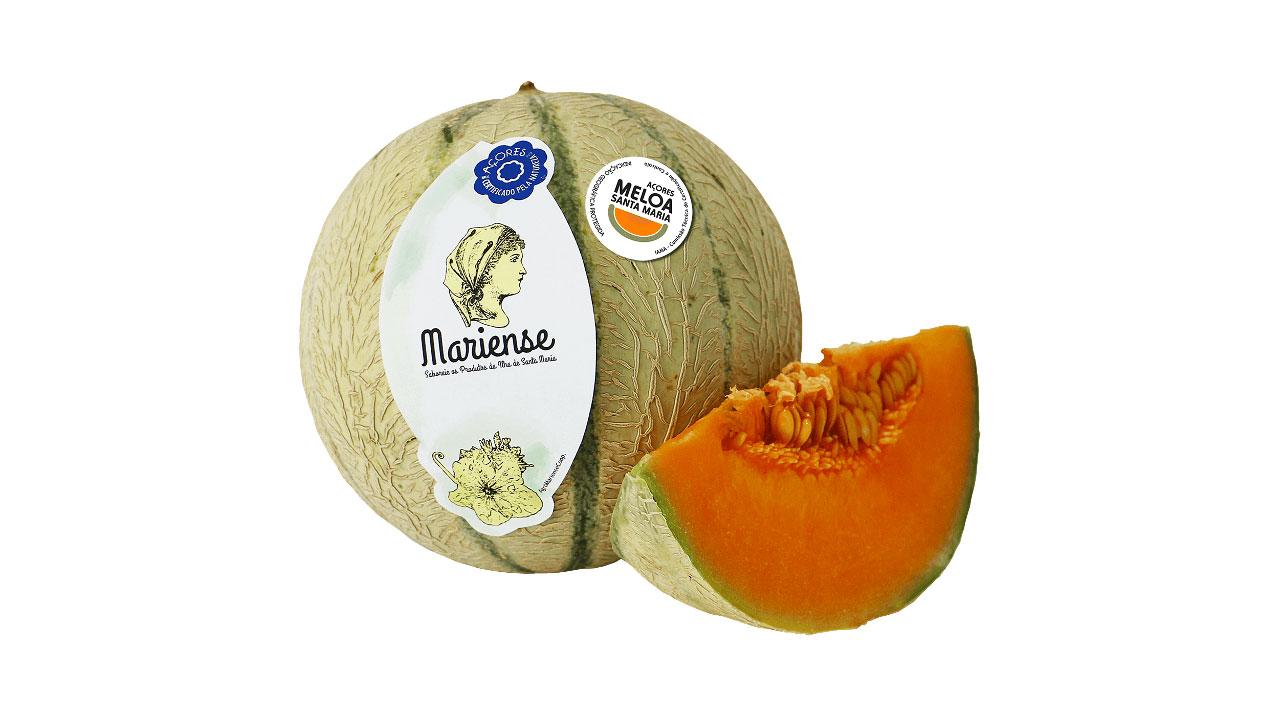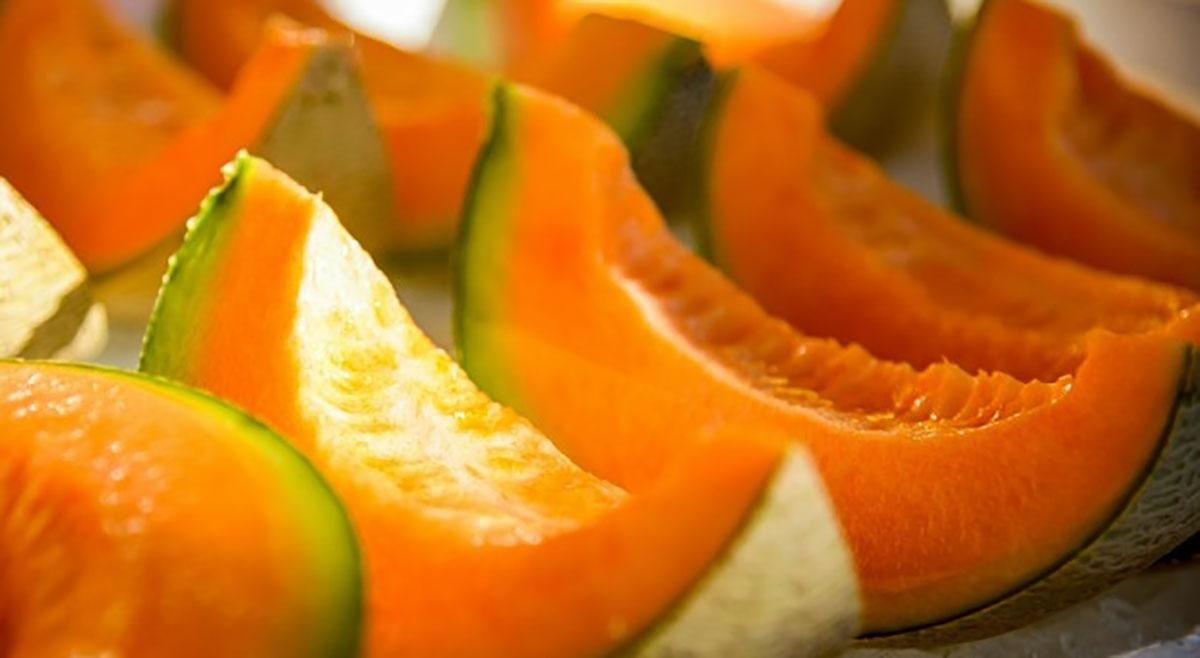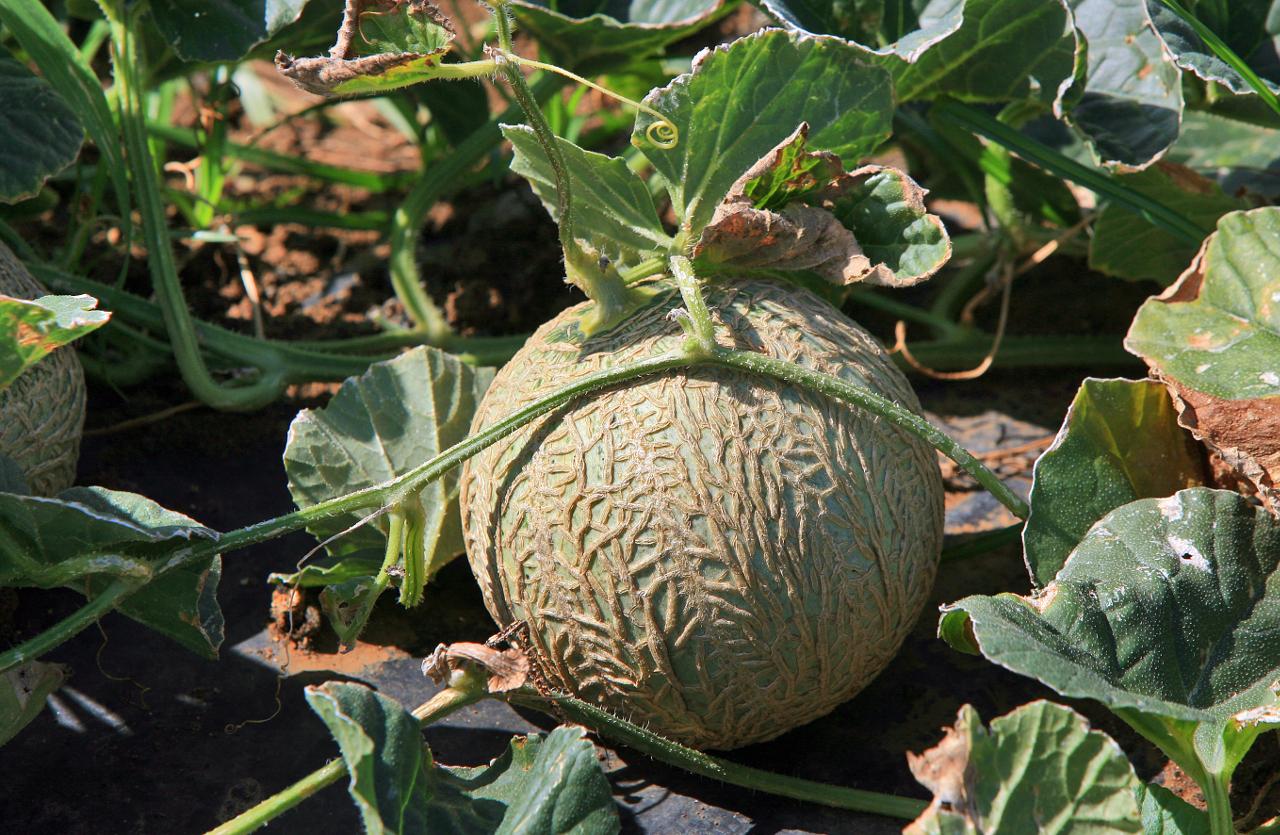Santa Maria Melon – Santa Maria Island
The Santa Maria Melon is a distinctive fruit from the island of Santa Maria. It possesses unique characteristics that set it apart from other cultivations in different regions, such as its texture, flavor, and aroma.
These characteristics of the Santa Maria Melon are made possible by the island’s natural conditions and the production methods employed by local producers. Due to its special traits, it has been classified as Protected Geographical Indication.
Índice de conteúdos [ocultar]
What is the Santa Maria Melon?

via Agromariense
The Santa Maria Melon is produced on Santa Maria Island. The average weight of the melon is 800 grams, and it measures about 13 centimeters in diameter, presenting an oval or rounded shape. Its color is greenish, turning more yellowish as it ripens, with orange flesh and a sweet taste.
The fruit is consumed fresh and is sold whole. Only fruits larger than 10 centimeters and of caliber I (weighing between 800 and 1400 grams) and II (weighing between 600 and 799 grams) are accepted for sale.
The Santa Maria Melon received Protected Geographical Indication status from the European Union in 2015, joining over a thousand Portuguese regional products that hold this status. It is the first product on the island to receive this title, with its classification based on the sweet and juicy flavor of the fruit and its high vitamin C content, which is much higher than that of common melons.
Particular Characteristics
The Santa Maria Melon distinguishes itself from other fruits of the same category produced elsewhere through its physicochemical and organoleptic characteristics.
Its orange color, soft texture, and sweet taste are unique features of the fruit produced on Santa Maria Island. Its aroma is also noteworthy, as it releases acids that leave a characteristic scent in the air.
It has a high vitamin C content, minerals such as potassium, magnesium, and calcium, as well as proteins, lipids, and carbohydrates. These values are higher compared to common melons.
Its special characteristics are due to the climatic conditions, soil type, and terrain of the island. The fact that producers use local production methods and possess extensive knowledge of the fruit also helps to enhance the characteristics of the melon.

via RTP Açores
History
The melon was introduced to Santa Maria Island in the 16th century by settlers. Initially, it was produced locally for personal consumption. In the 1970s, new varieties of melons were brought in by American immigrants.
The local producers quickly realized that this new variety of melon was special and grew rapidly, as well as being of good quality.
Recognizing its commercial potential, they began to expand its production area on the island. Various melons were tested to determine which adapted best to the island’s climatic conditions until reaching the current version.
Production Process
The Santa Maria Melon is produced in all parishes of the island. It is grown outdoors, and there are about 14 producers on the island.
When the melon reaches maximum ripeness, the peduncle falls, creating an opening for fungi to enter, thus reducing its storage capacity.
The harvest must be done before complete ripening and before the peduncle falls.
The harvest should be done very carefully to avoid damaging the fruits. The production of the fruit is limited, allowing for about 150 tons per year.
This decision, made by the agricultural cooperative on the island, was taken to defend and ensure the quality of the island’s product. The fruits are sold in regional and mainland markets, usually between July and September.
The Santa Maria Melon is a distinctive fruit. After various tests, the ideal melon was identified, and it is the one marketed regionally and nationally. The melon stands out from all others, and those who try it do not regret it! Experience and delight yourself with the Santa Maria Melon.
References:
Specifications Booklet of the Santa Maria Melon, Azores Protected Geographical Indication
> https://www.azores.gov.pt/NR/rdonlyres/5B1E3BCC-D1AB-4048-9988-4C84E6850B99/762626/10CEspecificaes_Meloa_Fev2013.pdf
 Quick links and suggestions
Quick links and suggestions
Travel insurance with 15% discount for the Azores or another destination Click here to simulate >
Looking for trips to the Azores? See these promotions >
Rent a car in the Azores? The best rent-a-car >
Activities and Experiences during your stay? Check it out here >
See Whales and Dolphins? Book now online >
Have you had a canceled or delayed flight in the last 3 years? Receive your compensation here >



